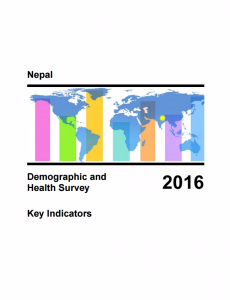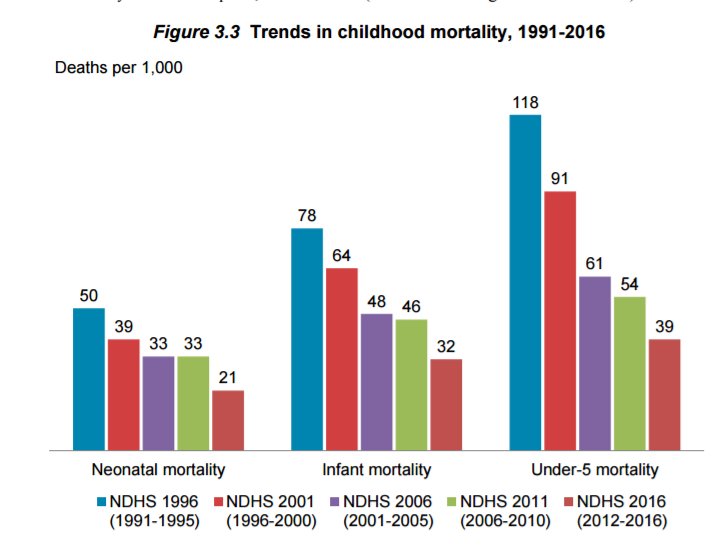
The 2016 Nepal Demographic and Health Survey (NDHS) was conducted as a periodic update of the demographic and health situation in Nepal. The 2016 NDHS is the fifth DHS survey to be conducted in Nepal in collaboration with the worldwide Demographic and Health Surveys Program.
The 2016 NDHS shows that after nearly a decade of stagnation the neonatal mortality rate (NMR) has moved from 33 per 1,000 live births to 21 per 1000 – a decline of more than one-third from 2011.
The infant mortality rate (IMR) also declined, from 46 in 2011 to 32 in 2016. While neonatal mortality still comprises more than half (54 percent) of under-five mortality, its share in under-five mortality has declined from 2011, when it was 61 percent.
Maternal health indicators have also improved. Antenatal care from a skilled provider increased to 84 percent from 58 percent in 2011, and nearly 70 percent received four or more antenatal care visits. Similarly, delivery by a skilled provider increased more than 1.5-fold, from 36 percent in 2011 to 58 percent in 2016. Although use of modern family planning methods is stagnant at 43 percent, the total fertility rate (TFR) is 2.3 per woman, a decline of 0.3 births from 2011.
Overall, the results show an encouraging trend toward meeting the SDGs targets.